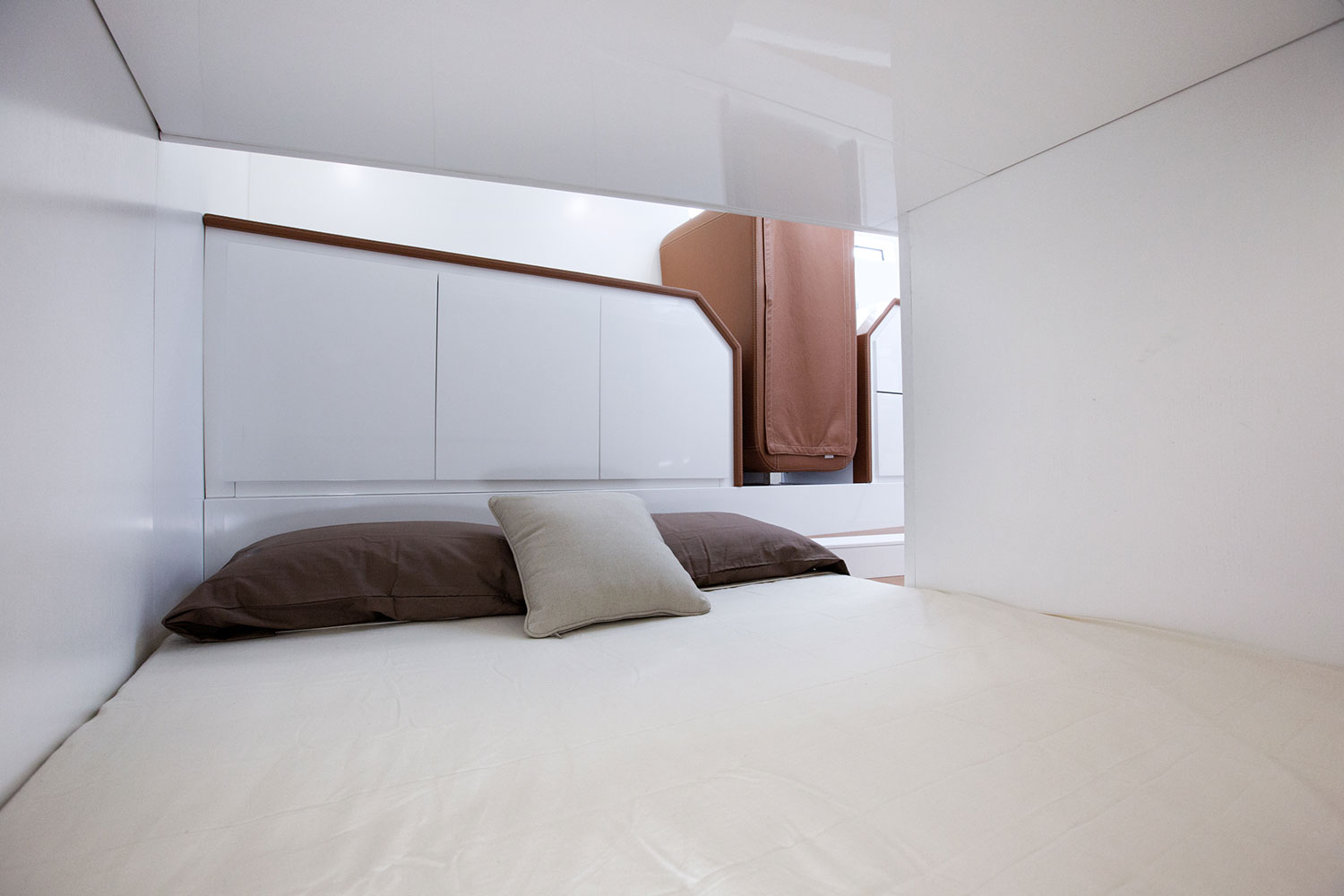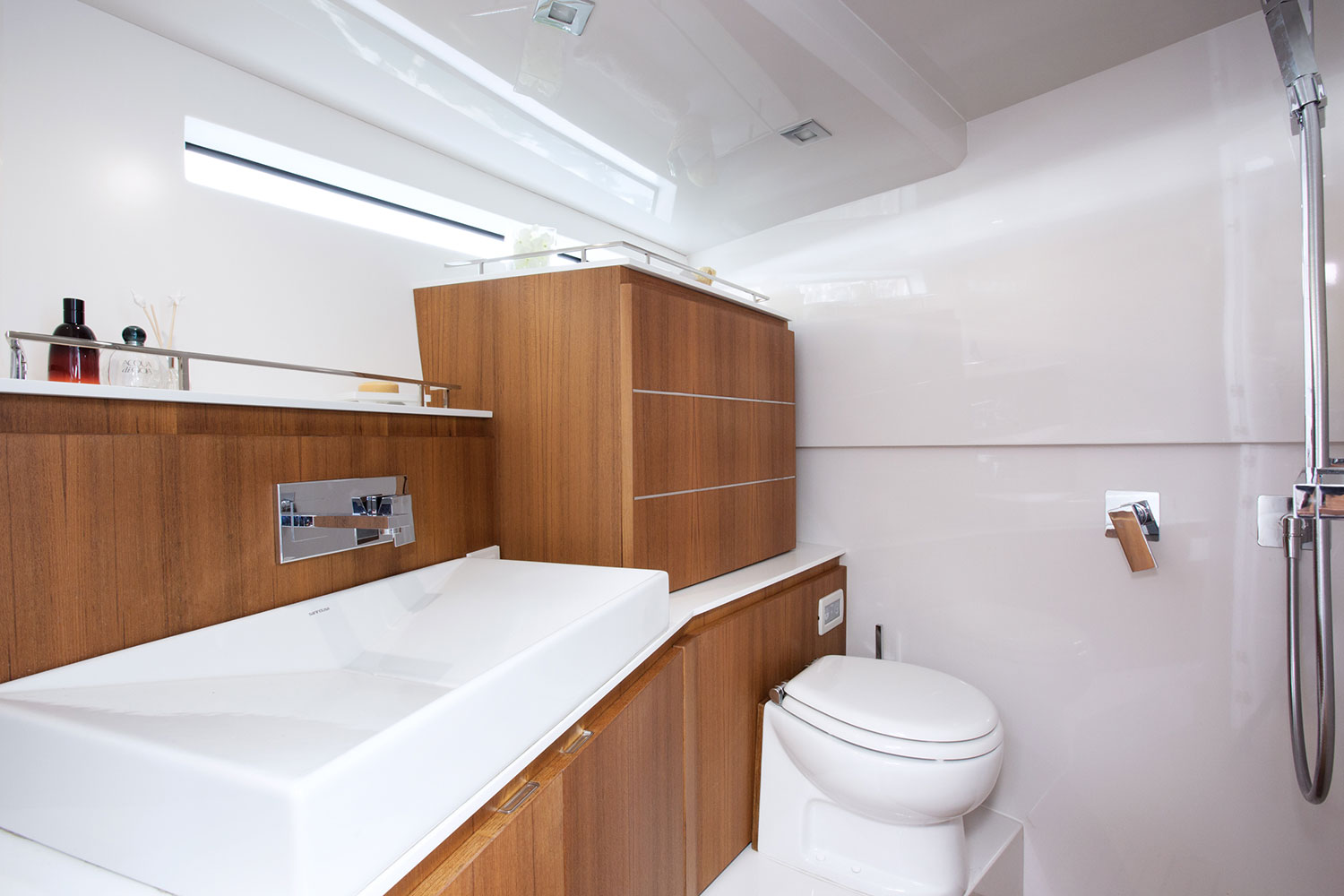We’ve heard plenty about smart homes here this year, but you know what will make even the best smart home sound so July 2016? That’s right: a “smart home” yacht. That’s exactly what new Italian yacht brand Evo Yachts has created with the Evo 43: a floating 43.1-foot smart home — which just happens to include one of the most innovative concepts we’ve seen in a yacht in quite some time.
That concept? An impressive Transformers-style bit of engineering, which means that with one tap of your smartphone or the yacht’s on-board tablet you can transform its deck area from a regular width of 14.8 feet to an expanded 20.7 feet. For those keeping track at home, that gives you an impressive 40 percent extra space, allowing the proud yacht owner in question to comfortably host up to 12 people.
“The most unique feature is the [yacht’s] transforming beach area,” Valerio Rivellini, Evo 43’s naval architect designer, tells Digital Trends. “In just 30 seconds the bulwarks opens transforming the cockpit into a 25 square meter terrace that can have a variety of [uses], according to the owner’s desires. We have already created several layouts for this area, with a great choice of furniture.”
The ability to seamlessly increase Evo 43’s size comes down to its nifty so-called “XTension” hydraulic system. It’s more than a gimmick, too, but makes the Evo 43 entertaining space-competitive with boats twice its length. “The deck, covered in teak, is in carbon and designed so that the height, at the time of the opening, is approximately 80 cm from the waterline, while that of [the] fiberglass bulwarks is about 15 cm from the water surface — actually turning the boat in a trimaran, thus ensuring the maximum stability and comfort,” Rivellini continues.
Cool Tech: Plant, wait, eat: The Nanofarm lets any idiot grow fresh produce indoors
What is particularly impressive about the vessel is how customizable it is. A large aft platform, built into the beach area can be mechanically extended and then rotated on its longitudinal axis by almost 270 degrees. Meanwhile, a modular platform (just about everything on the Evo 43 seems to be modular) can be raised and lowered to do everything from helping with boarding and unboarding to serving as a diving board.
Much of this can be controlled with the merest tap of a button — and, as it turns out, that’s just the tip of the iceberg. A mobile app for the yacht lets you control virtually every aspect of your seafaring experience, including (but not limited to) opening the anchor locker, controlling the onboard lighting, and even adjusting the height of both the indoor and outdoor tables.
“Evo 43 is born from a great challenge: to equip the vessels with the most modern applications of home automation that could simultaneously offer a wow factor and the best cruising experience,” Rivellini notes. “There were many variables to consider. These new technologies had to be necessarily easy and intuitive as regards their immediate use, and had to answer to all the strict standards of safety on board.”
A bit like Dr. Who’s TARDIS, the ability to squeeze the maximum out of a comparatively petit space (compared with some of the bigger mega-yachts, at least) continues to the lower deck. This level includes a double cabin with stowage area and wardrobe; V-shaped dining area, offering an induction stove, countertop, sink and refrigerator (and the option of making it into a second bedroom if you choose); and a bathroom with full height shower, sink and luxury wood and ceramic finish — because you’re not an animal, are you? Since you don’t want to the laughing stock of the yacht owners’ set, there’s also a 46-inch Bang & Olufsen TV (built into a mirror because… of course it is!), monster stereo system, and app-controlled air conditioning.
Perhaps the most amazing part about all of this, however, is that it can be accomplished without sacrificing much of anything in the boat’s performance stakes. Proud Evo 42 owners can choose between three different dual-engine Volvo IPS 600 options, ranging from 740 — 1,100 hp of total output. There’s a top speed of around 38 knots (70 km/h for all you land folk!), cruising speed of 30 knots (56 km/h), and a range of 300 nautical miles. Those are some more-than-respectable specs, and mean that while you’re spending a fair chunk on the Evo 43 (estimates suggest it will start at around $750,000), really you’re getting several different boats in one for that price.
That excuse holds water, doesn’t it? Either way, you’ve got until this September’s Cannes Yachting Festival to decide if you’d like a closer look…














